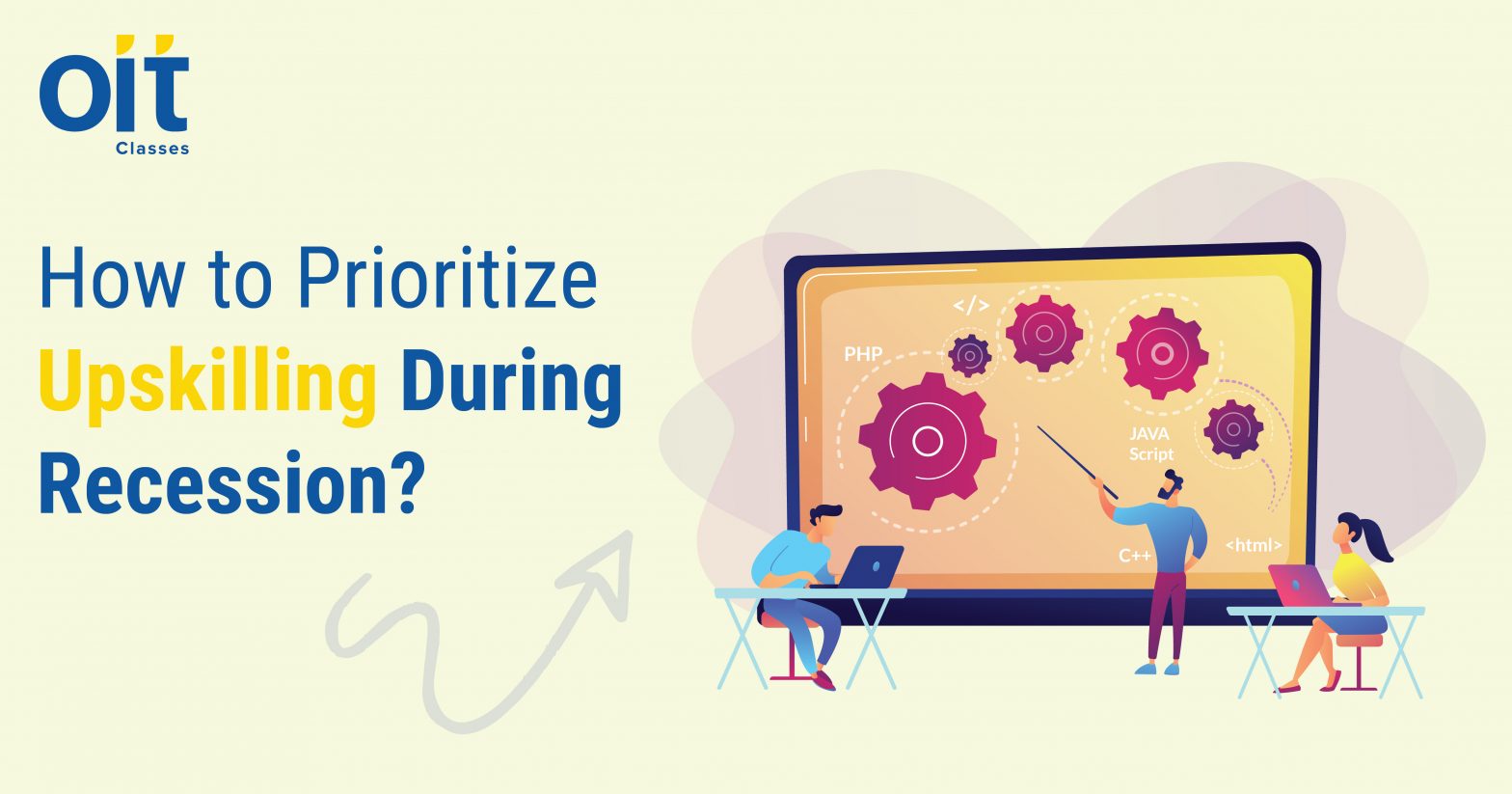
How to Prioritize Upskilling During a Recession?

A recession is a big tragedy. Not only does it impact the person who loses their job or the economy that gets affected, but it also impacts organizations. An organization has to cut down on its expenses and remove people. The productivity goes for a toss, and so make its profits.
Upskilling is one thing that can help individuals, and also organizations go through times of recession with minimum losses. For organizations, upskilling refers to the training an organization can arrange for its employees. Upskilling helps to improve the knowledge as well the skills of the employees. This, in turn, allows an employee to do his job in a much better way.
It means that employee gains the capability to take on more roles than one via cross-team learning. As a person having multiple skills is valuable to any organization, removing them from the organization is out of the question. Upskilling will help a business to grow and make profits due to recession too.
However, this can happen only when an organization includes upskilling for their employees whenever necessary.
How To Prioritize Upskill During Recession?
Upskilling is a tool that can be of great help during recessions. It is how a business prioritizes it determines the success of the approach. Below are a few strategies that a business can work on.
- Start Adapting Continuous Learning
An employee will catch on to the trend which goes on in the organization. If they see that their efforts to know more are not appreciated, they will not take interest in the upskilling pieces of training. A demotivated employee is a business’s biggest liability. They may also influence other employees with their experience.
So, if a business wants long-term success, it is necessary to include continuous learning right from the onset of the employees’ journey. Learning more and applying it practically will help the employee to become a valuable team member.
- Understand the Skill Gap
Not every employee is the same. A business owner/leader needs to carefully evaluate an employee’s strengths and capabilities. This will help to know which employee needs to train on which skill.
For understanding the gap, tasks can be assigned or the work can be monitored closely before getting an employee up for upskilling.
- Work on Inculcating Skills to Reduce the Gap
Now that there is clarity about where an employee has an opportunity to grow, it is time to introduce them to the skill-learning techniques. Again, the time taken by one employee to upskill can differ from other employees.
There are many proven methodologies that a business can use for upskilling its valuable employees. This will motivate the employee and the organization will not feel the need to remove them from the organization due to events like the recession.
Conclusion: There are a lot of benefits when it comes to upskilling employees from time to time. Once you are aware of the employee’s capacity and capability, it all comes down to entrusting them with responsibilities.
If the upskilling is done right, it can be quite beneficial to an organization as it will help in making profits even in the recession. It is also beneficial to the individual and helps create a long-term employee-employer relationship.





